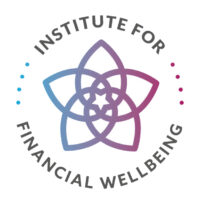Darren Critten is a Financial Adviser at Continuum (Financial Services) LLP with more than 30 years’ experience of matching his clients’ financial future with their long-term hopes. He’s currently taking the IFW Financial Wellbeing Certificate course and is already seeing ways it can help him to help his clients.
Have you heard the one about the boy who lost his grandfather’s valuable postage stamp, and gained a lifelong fear of investments in the process?
My client, an intelligent, successful, individual, came to me for what seemed like an ordinary meeting about potential investments, but it soon became clear that while he had a lot of money in cash, something was holding back from investing.
I asked him about his earliest memory of money, and he admitted that as a child of around ten years old, he’d been looking at his grandfather’s precious stamp collection and took out one that he liked the look of. It didn’t occur to him that this small rectangle of paper could be worth anything. Being so small and insubstantial, the stamp, which had been in his pocket, soon disappeared.
That was the first time in his life that he’d truly been in trouble, with every adult in his family rebuking him rather loudly! It seeded a deep fear of him of loss, which has translated into an unwillingness to invest. Any kind of risk is less palatable to him than the incremental losses that cash suffers due to inflation.
It reinforced for me why financial wellbeing matters.
I’m in the latest cohort of the IFW’s Financial Wellbeing Certificate, and found myself telling this anecdote in our first session. Week 1 includes segments on ‘Theories of happiness’ and ‘Intrinsic motivations’, which I’m planning to utilise in our next meeting.
I’ve begun a series of small, cautious investments with my client, gently easing him into the idea of doing something more proactive than simply seeking the best interest rates and spreading his money between banks.
I’ve helped him understand the value of what he’s got, but currently his fear of losing it is stronger than the chance of gain. I know my biggest challenge will be helping him to visualise that risk equals reward.
I’m going to use the information from the Financial Wellbeing Certificate course to try to encourage him to invest more courageously, and using what I’ve learnt already, I’ve put a plan together.
In particular I’m looking at how there are universal truths, human needs, and individual barrier on the client’s side. As well as allowing space for further listening to allow the client to open up, I need to help the client see that I know how he feels and that it’s ok to be afraid, while raising his awareness that his wariness is due to a self-limiting belief that took root due to the loss of that stamp, and the subsequent shame, in his childhood. By helping him to find another way of looking both at what happened and his emotional response to the idea of investment I work with him to move forwards.
The positive slant of that traumatic childhood experience is that he learnt the importance of being sensible and making decisions with care and consideration. However, some of these decisions can be more about saying yes than saying no. With this knowledge in mind, I aim to help my client recognise that caution doesn’t need to prevent action – it can simply be the impetus to fully comprehend all the risks so you can make the wisest choices for your future.


